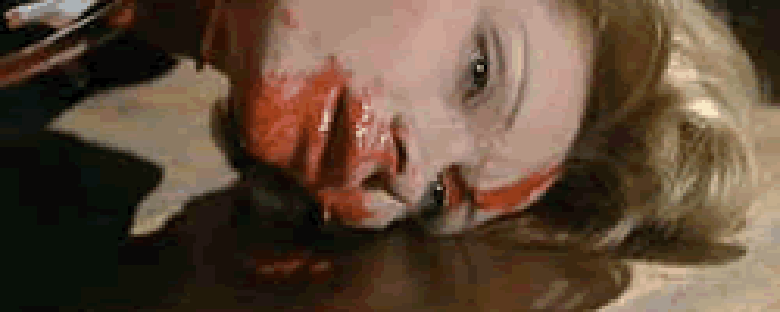Reviews
Profondo Rosso
Dario Argento
Italy, 1975
Credits
Review by Rumsey Taylor
Posted on 10 July 2004
Source Anchor Bay Entertainment DVD
Preceding the strict supernatural elements that would dictate his later films, Dario Argento focuses on a human killer in Deep Red. At the film’s beginning, at a conference for parapsychology, a speaker convulses; she senses the presence of a killer in her audience.
Our killer suffers from a cataclysm seen in flashback at the film’s opening. Though this is a frequented convention in horror films, the revelatory scene is constructed and presented in such an atypical manner that the beauty of the scene’s depiction violates its inherent horror — this is the fundamental (and offshoot) talent of Argento.
Marcus Daily, pianist, catches a glimpse of his neighbor’s final moments in a window. He rushes to her, removes the new corpse from the lip of a shattered window, and looks below to find sight of the killer — at the very spot he was, moments before.
The police arrive and Marcus observes the scene’s transformation, from a bounty of uncorrupted clues to a roomful of detectives and commotion. Amidst the lot Marcus finds one detail that stands erroneous: a painting is missing. (This device — an early clue repeated — is a frequented in other Argento films.)
Singularly armed with this knowledge, Marcus becomes involved in the investigation. In the aftermath of a later killing he finds the scene before the police. His fingerprints as apparent as the killer’s, he has made himself suspect and limited the amount of time he has to exploit the killer’s identity.
This synopsis should be irregular to those familiar with Argento’s later films. For one, the narrative emphasizes detail and resulting action, contrary to scenarios fashioned for their incident and not for their relation to the narrative. In abstract, the narrative here is the fundamental ladder as opposed to the feeble clothesline it is in other Argento efforts (namely, Suspiria).
Furthermore, Deep Red also functions as an introduction to the director’s thematic employments — namely, obsessive close-ups, compositional symmetry and balance, over-saturated colors, and subjective mis-en-scene. From a technical perspective, the film is a masterwork; considering the unexpectedly engaging narrative, praise for Deep Red is heightened.
On a final note, Deep Red contains what is arguably Argento’s most horrific image: a puppet — or ghost — inhumanly trots, knife in hand, toward the screen. The image is exceedingly frightening.
We don’t do comments anymore, but you may contact us here or find us on Twitter or Facebook.



